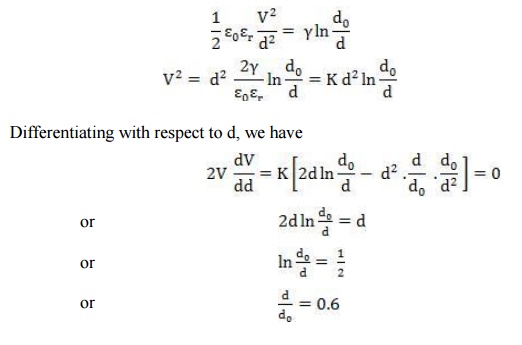Chapter: High Voltage Engineering : Electrical breakdown is gases, solids& Liquids
Electromechanical Breakdown
ELECTROMECHANICAL BREAKDOWN
When a
dielectric material is subjected to an electric field, charges of opposite
nature are induced on the two opposite surfaces of the material and hence a
force of attraction is developed and the specimen is subjected to electrostatic
compressive forces and when these forces exceed the mechanical withstands strength
of the material, the material collapses. If the initial thickness of the
material is d0 and is compressed to a thickness d under the applied
voltage V then the compressive stress developed due to electric field is

where εr
is the relative permittivity of the specimen. If γ is the Young’s modulus, the
mechanical compressive strength is

Equating
the two under equilibrium condition, we have

For any
real value of voltage V, the reduction in thickness of the specimen cannot be
more than 40%. If the ratio V/d at this value of V is less than the intrinsic
strength of the specimen, a further increase in V shall make the thickness
unstable and the specimen collapses.
The
highest apparent strength is then obtained by substituting d = 0.6 d0 in the
above expressions.

The above
equation is approximate only as Îł depends upon the mechanical stress. The
possibility of instability occurring for lower average field is ignored i.e.,
the effect of stress concentration at irregularities is not taken into account.
Related Topics